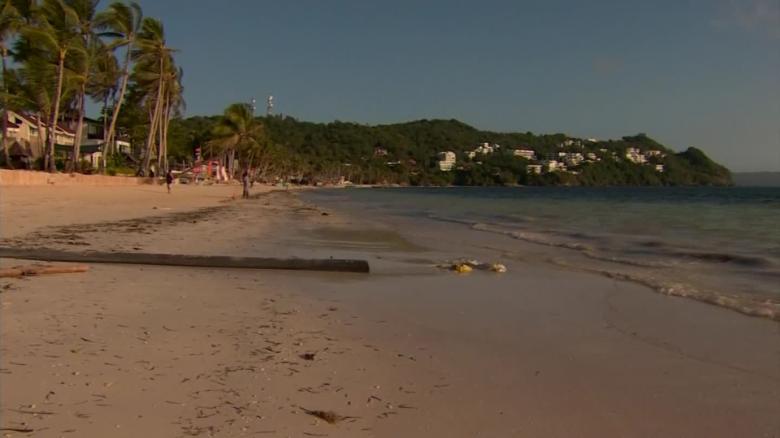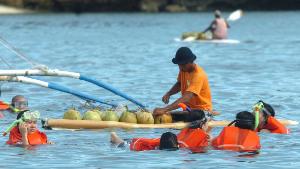Philippine riot police to keep tourists at bay during Boracay island cleanup
Manila, Philippines (CNN)The Philippine government will deploy dozens of riot police to ensure that tourists don't interfere with a planned six-month cleanup of its famed Boracay island, a police official said Tuesday.
Following its closure on April 26, the government will deploy more than 600 police officers, on the order of President Rodrigo Duterte, adding a 138-strong "crowd dispersal unit" to the tropical paradise's regular force, Chief Superintendent Cesar Binag told journalists.
Citing the potential for heated tempers in the wake of the unpopular forced closure, Binag said that the officers would prevent disturbances, while also laying out contingency plans for possible protests, kidnappings and bombings.

Play Video
Dealing with Marawi, Boracay & 10 million overseas workers
Presidential spokesman Harry Roque said that the shutdown was unavoidable.
"It was the only way to do it. It's a drastic police measure intended to protect the environment. We wanted to see if we could delay it any further, but apparently, the water quality in Boracay necessitated that the closure be done sooner than later."
Closure, cleanup ordered
Duterte ordered the closure of the tropical island, which often features on lists of the world's best beaches, earlier in April. In February he accused those responsible for the island's management of turning it into a "cesspool."
Among the problems caused by the island's long-running tourism boom are unregulated development and pipes carrying raw effluent directly into the sea.
"As long as there is s*** coming out of those pipes draining to the sea, I will never give you the time of the day (to return)" to the island, he said at the time.

A sewage pipe leading to the ocean on one of Boracay's famous beaches.
The island has struggled to maintain its idyllic allure after a steady increase in tourist numbers that began in the 1980s.
Last year, almost 1.7 million tourists, including a significant number of cruise line passengers, visited the island during a 10-month period, according to the governmental Philippine Information Agency.
The shutdown is intended to provide an extended period to clean up the island and surrounding seas. The cost of connecting to the sewerage system is likely to fall on business owners, said Ricky Alegre, assistant secretary for the Department of Tourism, told CNN in March.
"We describe (Boracay) as a world-class island destination with poor services," Alegre said.
"And we wish to upgrade the services. We must swallow the bitter pill, and see this solution as one step backward and two steps forward. We want to continue to promote the Philippines as a beautiful destination -- and want to add that our destinations are environmentally compliant."
Strict rules
Officials also reminded the media that Boracay would be closed for a maximum of six months. Epimaco Densing, assistant secreary for the Department of the Interior and Local Government, said that there was a possibility of a "soft opening" of the resort island "in three to four months."
Tourists who already have bookings on the island that extend past the closure date, and arrive in the days leading up to the shutdown, can stay for the duration of their bookings, Alegre said.
Media access during the shutdown period will be strictly controlled, with accreditation required by the Department of Tourism, but members of the media will not be able to stay on the island overnight.
Entry to the island will be restricted to residents, workers and resort owners, who will have to apply for ID cards from the government. Swimming, again restricted to locals, is under curfew and will be permitted only at one of the island's beaches.
Boats are restricted to a 15-kilometer (9-mile) exclusion zone around the island.
CNN's Kathy Quiano and Vasco Cotovio contributed to this report.
News Courtesy: www.cnn.com











